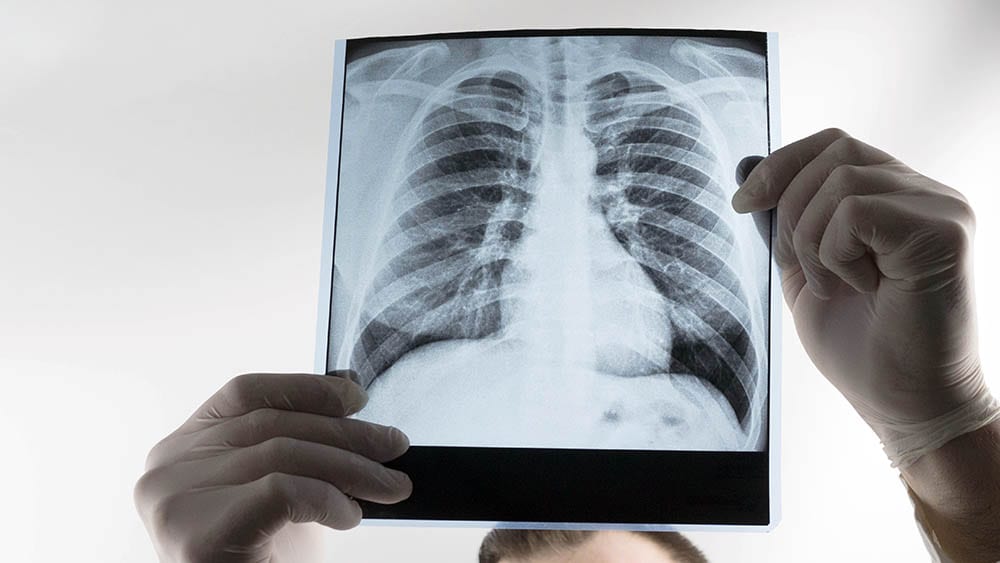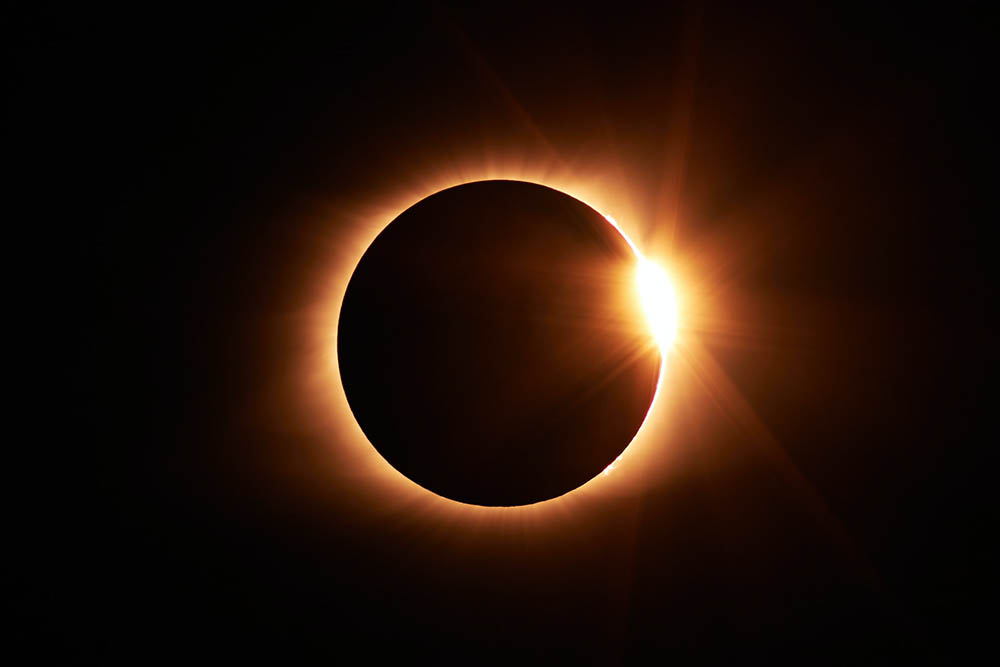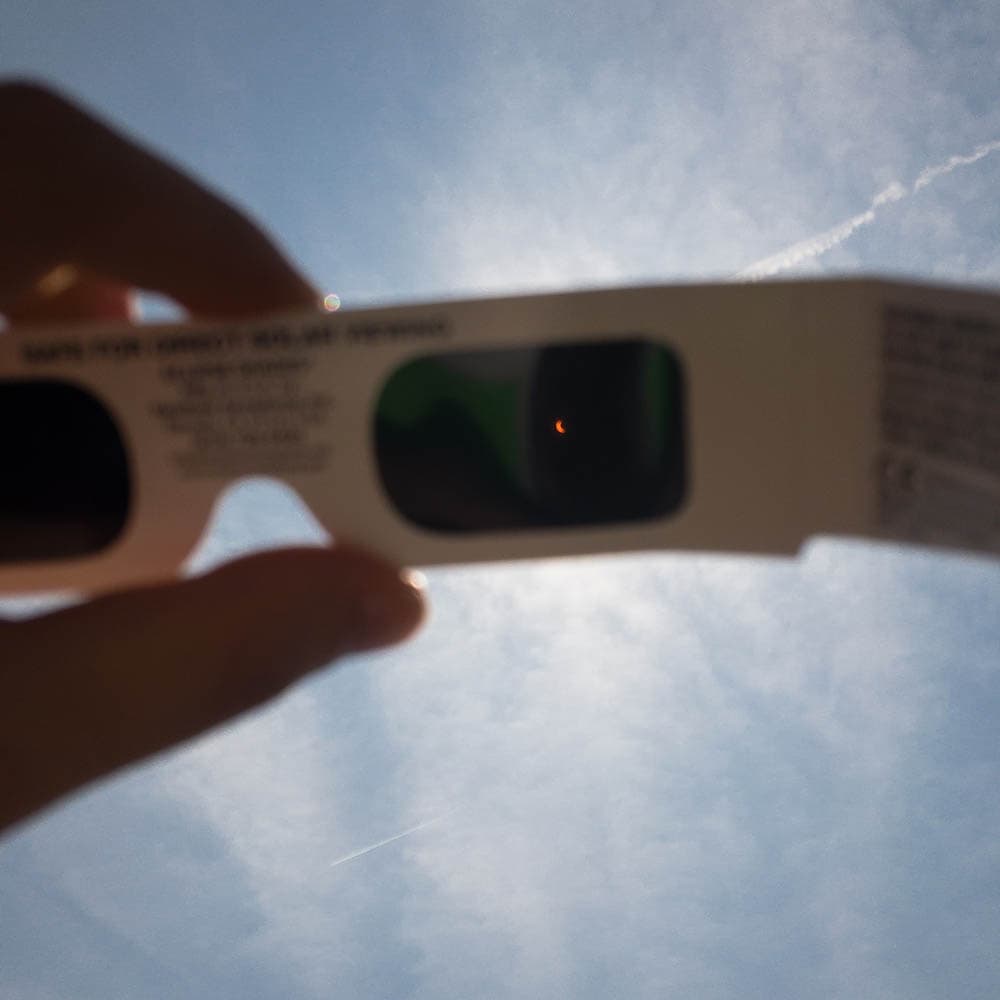Can You Use X-Ray Film to View a Solar Eclipse?
Last Updated on

A solar eclipse is an astronomical phenomenon that occurs when the moon moves between the Sun and the Earth. The opportunity to witness a total solar eclipse should not be taken lightly, as these rare astronomical events are very few and far between. During a total solar eclipse, the sky will darken, bands of shadows will race across your feet, the stars will twinkle, and birds will stop singing as the moon crosses in front of the Sun.
Although seeing a total solar eclipse is priceless, so is your vision, which can easily be adversely affected by looking at the Sun. There are several “DIY” methods for looking at solar eclipses using optical barriers such as lenses and X-Ray film. However, none of these options are safe and can even cause permanent eye damage.
Using X-Ray film, in particular, is not safe because it does not fully filter the Sun’s infrared and ultraviolet radiation from reaching your eyes. The only safe time to look at a solar eclipse is during the brief moment of totality when the moon almost completely blocks the Sun’s rays from reaching your delicate and sensitive eyes.

Dangers of Viewing a Solar Eclipse
Looking at a solar eclipse with the naked eye increases your chances of obtaining permanent eye damage such as total blindness, loss of central vision, distorted vision, and altered color vision. One of the most common effects is “eclipse blindness,” or solar retinopathy. This condition causes the cells in the back of your eye, or the retina, to become damaged and alter the image they transmit to your brain. This can cause a loss in central vision that can be permanent, but in some cases, it is temporary.
Because there are no pain receptors in your eyes, you may not even know that you are causing damage to them. This unfortunate fact means that looking at a solar eclipse can effectively burn your eyes, even if you aren’t aware of it. It may even take a few hours to days for the damage to appear in most cases. If you have any eye pain or discomfort after viewing a solar eclipse, it is vital to immediately seek treatment from an eye-care specialist.

Ways to Safely View a Solar Eclipse
Even though you cannot look at a solar eclipse directly, it is still possible to get a great view using a variety of indirect methods. By using these tools, you can oftentimes get a better view of an eclipse than with the naked eye alone.
Using Eclipse Glasses

Using eclipse glasses is one of the safest and easiest methods for viewing an eclipse. By employing specially designed lenses, eclipse glasses are able to reduce the sunlight from a solar eclipse to safe viewing levels. Most of these lenses are made from flexible black polymer, glass, or plastic infused with carbon particles. This design allows eclipse glasses to not only block all harmful ultraviolet light but nearly all visible light as well.
This is because eclipse glasses are nearly 100,000 times darker than sunglasses, allowing them to protect your eyes from the Sun’s harmful rays effectively. Some eclipse glasses are even sold in handheld versions, which usually consist of a card with a central lens that is held up to your eye.
Making a Pinhole Projector
Making a pinhole projector is one of the most inexpensive and most accessible ways to view a solar eclipse. This easy DIY project only requires two stiff pieces of paper and a sharp thumbtack or pin. To make an easy DIY pinhole projector, follow these steps:
- Use a thumbtack to make a tiny, round hole in the center of one of the sheets of paper to make the “projector.”
- With your back to the Sun, hold the paper with the hole above your shoulders, allowing the sunlight to hit it directly.
- Hold the other piece of paper at a distance from the projector. This paper will act as a screen on which you can project the eclipse image.
- You should now see an inverted image of the Sun projected on the “screen.” As the Moon passes in front of the Sun during the eclipse, its shadow passes along the projected image.
Experiment with holding your “screen” at different distances from your “projector.” You should see that as the distance between your screen and projector increases, the image of the Sun is also magnified. You can also experiment with making a variety of other complex and sturdy versions of this project, such as box projectors. However, this simple version using two pieces of paper is the easiest and most cost-effective way to observe a solar eclipse.
Using Welder’s Glass

Using a welder’s mask with number 14 glass can provide effective eye protection when viewing a solar eclipse. According to NASA, shade 14 welding lenses are the only safe options for viewing a solar eclipse because they filter out an acceptable amount of sunlight. If you’re interested in using this method to view a solar eclipse, shade 14 lenses can commonly be found in welder supply and hardware stores. However, if you find any scratches on the glass, you should not use them as your eyes can easily become damaged as a result.

Conclusion
Looking at a solar eclipse can be an awe-inducing and memorable experience; however, it is imperative to take appropriate precautions to protect your sensitive and delicate eyes. Looking at the Sun can cause permanent eye damage due to its harmful ultraviolet rays, which can burn the cells in our retinas. There are various DIY methods for looking at a solar eclipse, although not all of them are safe.
One popular method for viewing a solar eclipse is using X-Ray film; however, this is unsafe as it does not filter out all of the Sun’s harmful rays. Instead, you should use safer options such as eclipse glasses or shade 14 welding lenses. These tools have been proven to filter out appropriate amounts of harmful sunlight, so it is highly suggested that you use them. Alternatively, you can also make a simple pinhole projector for the safest eclipse viewing experience of all.
Regardless of which method you choose to view a solar eclipse, being considerate of your eyes’ health is paramount. If you are experiencing any eye pain or discomfort immediately after or in the days following a solar eclipse, we emphasize that you should visit an eye-care specialist immediately.
Featured Image Credit: Andrii_Video Production, Shutterstock
About the Author Robert Sparks
Robert’s obsession with all things optical started early in life, when his optician father would bring home prototypes for Robert to play with. Nowadays, Robert is dedicated to helping others find the right optics for their needs. His hobbies include astronomy, astrophysics, and model building. Originally from Newark, NJ, he resides in Santa Fe, New Mexico, where the nighttime skies are filled with glittering stars.
Related Articles:
Can You Use Binoculars to Look At Stars? How to Choose the Right Pair
How to Clean a Refractor Telescope: Step-by-Step Guide
How to Clean a Telescope Eyepiece: Step-by-Step Guide
How to Clean a Rifle Scope: 8 Expert Tips
Monocular vs Telescope: Differences Explained (With Pictures)
What Is a Monocular Used For? 8 Common Functions
How to Clean a Telescope Mirror: 8 Expert Tips
Brightfield vs Phase Contrast Microscopy: The Differences Explained
